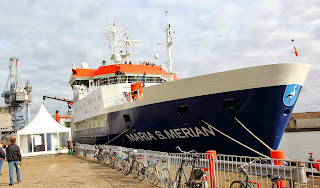All of the work of the Ocean Sampling Day effort has been based on tremendous in kind contributions of the community co-ordinated by the Micro B3 project. Now, based on the successful engagement of 60+ sites, in close collaboration with the Genomic Observatories (GOs) Network, preliminary sequencing results, generated by Argonne National Lab and a growing legal framework, including the option for bioarchiving through the Smithsonian’s GGI initiative, we are making an open call for participation in the main OSD event on the summer solstice June 2014.
In addition to expressions of interest from expert sampling sites, we are looking forward to add additional data generation activities, specifically DNA extraction, PCR and sequencing support, to OSD.
We expect to have around 500 samples and are particularly interested in the following types of data, but are open to additional uses of OSD samples:
OSD PRIORITY DATA SETS
Foundational dataset:
Community profiling of bacteria & archea - 16S (V3, V4) (already started by ANL)
Plus any or all:
- Metagenomes (shotgun sequencing)
- 18S
- ITS
- Viral sequencing
- Use of other primers for bacterial communities profiling (other regions of 16S, other loci, etc)
- Targeted deep sequencing of specific samples
- Metatranscriptomes
Further wish list:
- Cell densities
- Environmental parameters
- Microarrays
To express formal interest in participating in OSD as a data generation partner please fill in this brief form:
The OSD Team will follow up if we have further questions. For further information or to discuss ideas please contact the OSD Team via osd-contact<at>microb3<dot>eu.
EXPRESSION OF INTEREST:
- Main contact and affiliation
- Short summary of your offered contribution to OSD
- Type of data you would like to generate and Why
- Scientific Contributions/Hypotheses to be tested
- How much DNA is required from each sample
- How many samples you are willing to analyze
- A costing for the contribution (in kind costs)
- Any further comments
Funding to Support OSD June 2014 Data Generation Activities
As part of ramping up OSD for 2014 we will be making available a limited budget of roughly 50k Euros for data generation activities under an open competition. We would like to be able to fund the engagement of as many groups as possible and will be seeking further funding so we welcome ideas for partnerships.
Please make your expression of interest by December 15th for consideration by the OSD Committee in January 2014.
All proposals will be judged first on scientific merit and activities that will be prioritized for contributed funding will include those that:
- offer significant in kind contributions to OSD
- align well with the existing efforts and priorities of OSD
- extend the breadth of taxonomic coverage of OSD
- extend the breadth of loci examined in OSD
- enable the comparison of OSD data to existing datasets
- help to build the OSD Consortium


















